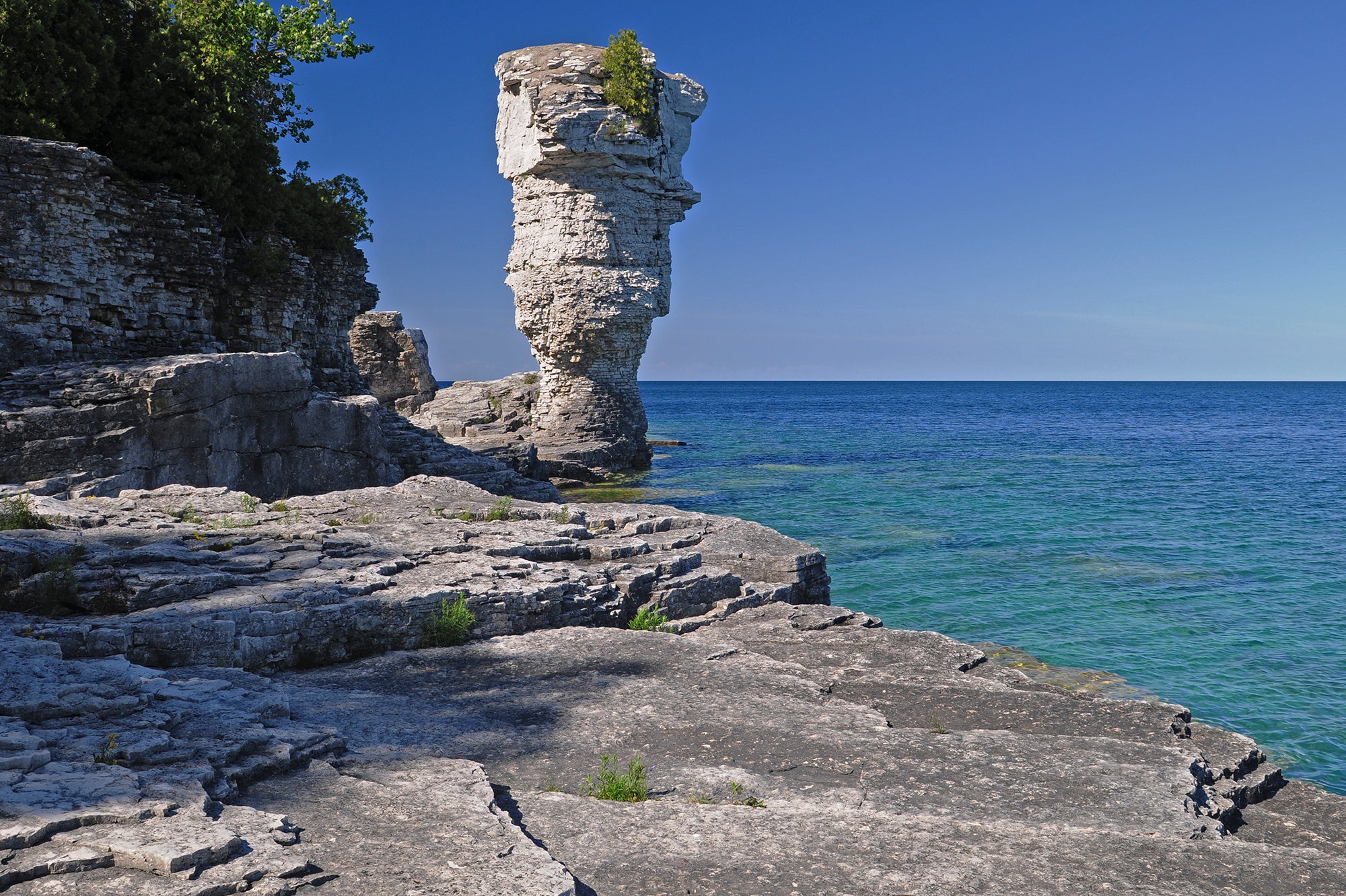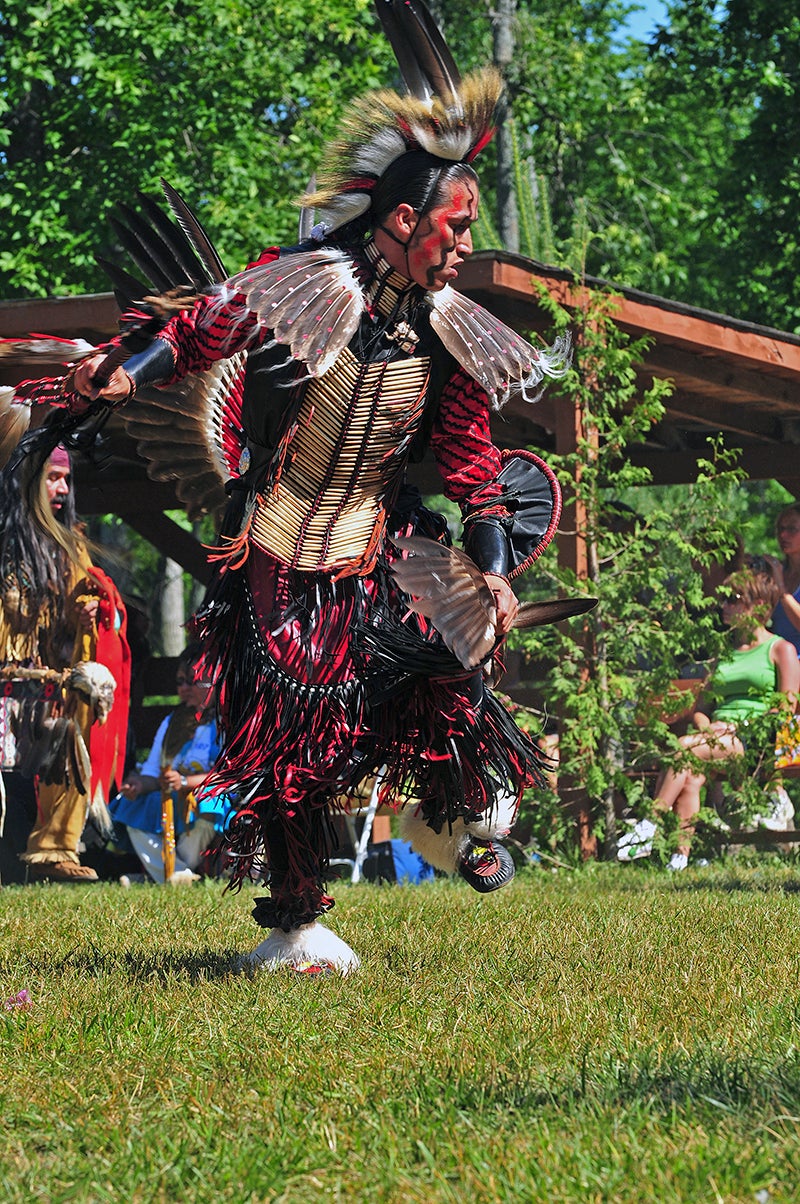Savour the treasures of Ontario’s Manitoulin Island
As well as having the distinction of being the largest freshwater island in the world, 'Spirit Island' is a dramatic place out of time says Susan Griffith

Your support helps us to tell the story
From reproductive rights to climate change to Big Tech, The Independent is on the ground when the story is developing. Whether it's investigating the financials of Elon Musk's pro-Trump PAC or producing our latest documentary, 'The A Word', which shines a light on the American women fighting for reproductive rights, we know how important it is to parse out the facts from the messaging.
At such a critical moment in US history, we need reporters on the ground. Your donation allows us to keep sending journalists to speak to both sides of the story.
The Independent is trusted by Americans across the entire political spectrum. And unlike many other quality news outlets, we choose not to lock Americans out of our reporting and analysis with paywalls. We believe quality journalism should be available to everyone, paid for by those who can afford it.
Your support makes all the difference."In the middle of a continent is a great lake. In that lake is a huge island; in that island is a lake, and in that lake is Treasure Island ..." Not the opening of a children's story but a real place in Ontario that retains some of the artless wonders of childhood: a place where the stars twinkle more brightly, the deer emerge from the forest at twilight and the abundant fish are enchanted princes (that one's a fib).
As well as having the distinction of being the largest freshwater island in the world, Manitoulin (meaning 'Spirit Island') is a place out of time. Hundreds of miles of deserted roads edged with Queen Anne's lace, chicory and fringed gentian take motorists and cyclists past beaver dams and abandoned one-room schoolhouses, perhaps ending up at a remote lighthouse or a rocky shoreline adorned with twisted evergreens. No roads lead to Starbucks or Tim Horton, the ubiquitous Canadian fast-food chain, because big corporations have happily bypassed Manitoulin.

Who would have imagined that the same geological phenomenon of erosion that created the mighty Niagara Falls would culminate on this little-known holiday island nearly 250 miles north? The same edge over which the waters thunder at Niagara gives rise on Manitoulin to pretty Bridal Veil falls - where it's fun to swim in the pool and step behind the curtain of water - and to the dizzying drops and stunning vistas at the end of the Cup and Saucer hiking trail. From the raised edge in the east, the island tilts down towards the southwest where it slides into Lake Huron at spectacular sandy beaches like Providence Bay.
The Niagara Escarpment, a Unesco World Biosphere Reserve, links the famous falls and the unfamous island. “Escarpment” is a fancy word for a long steep slope along the edge of a raised plateau, as seen on a much smaller scale in the Peak District or the Cotswolds. Dramatic cliffs stretch on and off through the north-south spine of Southern Ontario supporting unique and diverse habitats of ancient gnarled cedars, delicate orchids and unusual ferns. You can walk from one end to the other along the oldest and longest marked hiking trail in Canada, tracking the escarpment for 550 miles. The Bruce Trail (brucetrail.org) starts on the heights of Queenston near Niagara Falls, where British forces defeated the Americans in the War of 1812, and finishes at the ferry port of Tobermory at the northern tip of the Bruce Peninsula. Marked with white diamond-shaped signs, the Bruce Trail follows permissive paths connecting dozens of conservation areas. Past and present evidence of human activity adds interest, from defunct limekilns to syrup-tapping equipment in maple sugar bushes.

The further north you travel along the Escarpment, the more scenic it becomes and the blacker the night skies. Early settlers discerned shapes in the escarpment rock formations along the Bruce Peninsula, which is how Lion's Head got its name, now a cosy resort with a marina nestling under cliffs. From Tobermory a little further north, you can catch one of the four ferries a day to Manitoulin and drive to Kagawong (“where mists rise from the falling water”), Sheguiandah and Sheshegwaning, places with musical, magical names that hint at the storied past of the First Nations people who still inhabit them. The island is one of the best places in Canada to encounter Aboriginal culture. Powwows take place in the summer, culminating in the Wikwemikong Competition Powwow on the first weekend in August when bands gather from great distances to demonstrate their dancing and drumming.
An innovative First Nations enterprise, Great Spirit Circle Trail (circletrail.com) imparts Anishinaabek history and culture on short enthralling hikes and canoe trips. Aboriginal guides focus on themes such as traditional medicine, bush foods, handicrafts and drumming.

Lakeside “camps”' are the classic Manitoulin style of accommodation, comprising simple cabins and perhaps tipis encircling an open space, where campfires or impromptu volleyball games might take place. An outstanding example is Gordon's Park Eco Resort in Tekhummah Township, which has been declared a Dark Sky Preserve (gordonspark.com/dark-sky-preserve).
At regular stargazing events, you can try to spot the Rings of Saturn or meteors through wide-angled binoculars and a telescope. With the naked eye you will see the Big Dipper or Plough and perhaps hear the ancient Ojibwe legend of how a brave Fisher (kind of weasel) was turned into the constellation after releasing Summer from captivity.
Travel Essentials
The only land access to Manitoulin Island is via a one-lane swing bridge to the main town of Little Current on the north coast, which is a 90-minute drive from Sudbury, the nearest city with an airport. On the opposite side of the island, South Baymouth can be reached in less than two hours by the Chi-Cheemaun car ferry from Tobermory (which is about a four-hour drive from Toronto). Times and fares for the four summer sailings a day in each direction can be found at ontarioferries.com where you can also make a booking. A company called Hiking Holidays offers various hiking adventures on Ontario's Bruce Trail (hikingholidays.ca/tour/bruce-trail-holidays).
Air Canada (aircanada.com) operates four flights a day from London Heathrow to Toronto and Air Canada rouge connects Edinburgh, Glasgow, Manchester and Dublin with Toronto. Air Canada rouge will also operate summer flights from Gatwick to Toronto from May 19, 2016. Starting March 15, 2016, British and other visa-exempt foreign nationals who fly to Canada will need an Electronic Travel Authorization (eTA). Applications can be made ahead at cic.gc.ca/english/visit/eta.asp and the fee is C$7.
Join our commenting forum
Join thought-provoking conversations, follow other Independent readers and see their replies
Comments